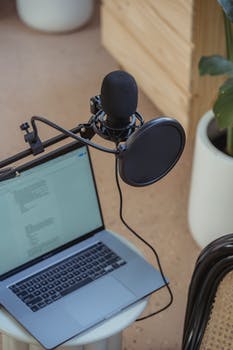Hi everyone,
-Lowen’s Mind-Body Link-
Context
This assignment is designed to inform psychologically minded adults who are desirous of creating knowledge in regard to the mind-body link. Students completing this assignment are required to provide their own notebooks and pens and have at-home or on-campus access to a computer. The facilitator of this assignment is responsible for providing their own notebook, their own pens, and a laptop.
As the learning context of this assignment takes place within a 3-hour weekly session, the first 10-minutes of each session involve the establishment of a caring and attentive learning environment. The facilitator of the overall course is therefore responsible for using the 10-minute period to welcome students, to make small-talk, and to engage in active listening.
Learning Outcomes
- Articulate Alexander Lowen’s (2013) bioenergetic analysis.
- Reflect on how grieving can alleviate depressive symptoms.
- Identify how the repression of anger fosters the development of heart disease.
- Within Google Slides or PowerPoint, demonstrate knowledge and insight regarding Alexander Lowen’s (2013) bioenergetic analysis, process of grieving, expressions of anger, and the physiological risks of emotional repression.
Required Course Reading
Read p. 16-32, p. 50-77, and p. 104-118 from Love, Sex, and Your Heart (Lowen, 2013).
The preliminary reading is intended to provide you with basic understandings of Lowen’s concepts regarding the mind-body link and the emotional and physiological benefits of grieving and expressing anger effectively.
Interpreting the rubric:
You will be evaluated on this assignment through evidencing your creativity of expression through the use of audio, self-reflective video, and photographic use within either Google Slides or PowerPoint.
It is important for you to create your own audio and video recordings as both methods of communication will help you to discover your own self-reflective stories. I do not expect you to communicate Lowen’s concepts of the mind-body link, bioenergetic analysis, and the benefits of expressing grief and anger by rote. Rather, I expect that you will communicate what you learned introspectively by way of your use of multimedia and self-reflective gleaning.
Purpose for the assignment:
The purpose of this multimedia assignment is for you to learn about the connection between the human mind and the human body. Specifically, you are to learn four of Lowen’s (2013) concepts regarding the mind-body link, bioenergetic analysis, grieving, and the expression of anger. You will also learn some of the physiological consequences of your own emotions. Lastly, you will learn how to effectively organize, explain, and apply Lowen’s (2013) emotional and physical concepts to your own life contexts.
Preliminary guidance:
(1) Read p. 16-32; p. 50-77; and p. 104-118 from Alexander Lowen’s (2013) book titled Love, Sex, and Your Heart.
(2) Use either Google Slides or PowerPoint as a base for your self-reflective and expressive audio, video, and photographic components.
(3) Use the first half of your presentation to introduce yourself, define your terms, and organize Lowen’s (2013) concepts of the mind-body link, grieving, and aggression.
(4) Use the second half of your presentation to apply Lowen’s (2013) concepts of the mind-body link, grieving, aggression, and the negative consequences of emotional repression to your own personal experiences.
(5) The included grading rubric is based on the creation of a multimedia presentation which is no longer than 10-15 minutes in length. Ensure that you clearly communicate how Lowen’s (2013) concepts apply to your own life experiences.
Producing your media:
Step 1: Read the selected readings from Love, Sex, and the Heart (Lowen, 2013).
Step 2: Using the ERIC database, source 3 scholarly journals referencing the mind-body link and the importance of emotional expressivity in human physiology and psyche.
Step 3: Begin your creative process by searching the Creative Commons database for any photographic, visual, or auditory aids revolving around Lowen’s (2013) concepts of the mind-body link.
Step 4: Continue your creative process by integrating your own self-reflective video and audio recordings into either Google Slides or PowerPoint. Feel free to use Audacity in order to record the narration for your slides. By combining slides with photographs and your own voice and video, you will learn the importance of connecting psychological information to your own personal forms of expression.
Step 5: Use the first half of your presentation to organize Lowen’s theoretical concepts of human love, grief, and anger. Contextualize the connection between the human mind and the human body.
Step 6: Use the second half of your presentation to connect Lowen’s (2013) conceptions of (1) mind-body link and (2) the physical benefits of emotional catharsis to your own personal life experiences. Communicate to your chosen audience how you have experienced Lowen’s concepts in your own life contexts.
Share your own stories of anger, grief, and human love through the use of your audio, video, and photographs. Communicate moments in your life where you were silenced or were forced to not express your anger or love and share how such experiences made you feel in your thoughts and in your body.
Recommended multimedia tutorials:
This Audacity Tutorial provides comprehensive assistance ranging from the initial setup of your microphone, recording, to editing and mixing your completed narration.
I also recommend that you view David Lee’s Google Slides tutorial as he effectively teaches how to insert a title, images, video, audio, tables, shapes, and how to download your Google Slides presentation to upload to YouTube.
If you choose to use PowerPoint as your base of operations consider viewing Jay Bertelsen’s PowerPoint multimedia tutorial. He effectively teaches how to navigate through Microsoft PowerPoint in order to insert titles, paragraphs, images, audio, video, transitions, shapes, and slide timings.
Timescale:
It is recommended that you completed the required Lowen (2013) reading by the end of Unit 3 with your associated research of three scholarly journals completed by the end of Unit 4. It is expected that this assignment be handed into the Moodle Dropbox by the end of Unit 5.
Assignment Rubric:
| Rubric |
3-4 points |
2 points |
1 point |
0 points |
|
Excellent |
Good |
Adequate |
Requires Improvement |
| Organization of the Project |
The multimedia assignment clearly organizes and describes Lowen’s (2013) four concepts of the mind-body link, grieving, anger, and the health risks of emotional repression. |
The multimedia assignment organizes and describes only 2 of Lowen’s (2013) concepts of the mind-body link, grieving, anger, and the health risks of emotional repression. |
The multimedia assignment organizes and describes only 1 of Lowen’s (2013) concepts ranging from the mind-body link, grieving, anger, and the health risks of emotional repression. |
The multimedia assignment does not organize or describe any of Lowen’s (2013) concepts. |
| Exploration of Research |
The student successfully sourced 3 scholarly references within the multimedia assignment. |
The student sourced 2 scholarly references within the multimedia assignment. |
The student only sourced 1 scholarly reference within the multimedia assignment. |
The student failed to include any scholarly references within the multimedia assignment. |
| Connection to Experiences |
The multimedia assignment clearly identifies how all four of Lowen’s (2013) concepts of (1) the mind-body link, (2) grief, (3) anger, and the (4) avoidance of emotional repression connect to personal worldview and life experience. |
The multimedia assignment clearly displays how 3 of Lowen’s (2013) concepts apply to personal worldview and life experience. |
The multimedia assignment only connects one of Lowen’s (2013) concepts to personal worldview and life experience. |
The multimedia assignment does not contain any of Lowen’s (2013) concepts and fails to connect to any personal worldviews or life experiences. |
| Presentation of the Assignment |
Within Google Slides or PowerPoint, student knowledge, self-reflection, and self-expression are presented with 3-4 different forms of multimedia (i.e., narrated slides, video, photographs, and artwork were implemented). |
Within Google Slides or PowerPoint, knowledge, self-reflection, and self-expression are presented with 2 different forms of multimedia (i.e., narrated slides and video were implemented). |
Within Google Slides or PowerPoint, knowledge, self-reflection, and self-expression were presented with only one form of multimedia (i.e., only narration of slides was implemented). |
Knowledge, self-reflection, and self-expression were presented without any use of multimedia content (i.e., the slides were all blank). |
| Connection to readings and/or course materials |
Student exceptionally articulates self-reflection and discussion of the required Lowen (2013) course reading. |
Student demonstrates strong self-reflection and discussion of the required Lowen (2013) course reading. |
Student demonstrates cursory self-reflection and discussion of the required Lowen (2013) course reading. |
Student fails to demonstrate any questioning of assumption, self-reflection, or discussion of the required Lowen (2013) course reading. |
Best,
Carson 🙂
References
Audacity. (2019, November 15). Record. https://manual.audacityteam.org/man/record.html
Audacity. (2019, November 15). Tutorial: Mixing a narration with background music. https://manual.audacityteam.org/man/tutorial_mixing_a_narration_with_background_music.html
Lowen, A. (2013). Love, Sex, and Your Heart. Simon and Shuster.










